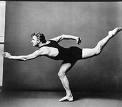Myspace Layouts by Pimp-My-Profile.com
Mikhail Nikolaevitch Baryshnikov was born in Riga in 1948 and began his ballet studies there in 1960. In 1964, he entered the Vaganova School in what was then called Leningrad, studying with the legendary Aleksander Pushkin and soon winning the top prize in the junior division of the International Varna Competition. Word began spreading of this extraordinary young dancer of precious classical purity and exquisite presence. Clive Barnes gave notice of what was to come after observing the student Baryshnikov in Pushkin's class, describing him as ""the most perfect dancer I have ever seen.''He joined the Kirov Ballet and made his debut at the Maryinsky Theater in 1967, dancing the “Peasant†pas de deux in Giselle. Choreographers recognized in Baryshnikov a unique instrument for new dance, and soon Oleg Vinogradov, Konstantin Sergeyev, Igor Tchernichov, and Leonid Jakobson created ballets for him. Jakobson's 1969 Vestris, a feast of virtuosity and wit, became Baryshnikov's signature role and, along with his intensely emotional Albrecht in Giselle, his calling card to his new home.Baryshnikov defected from the Soviet Union in 1974 in search for artistic and personal freedom in the West. He made his debut with the American Ballet Theatre that same year, dancing Giselle with Natalia Makarova. He stayed with ABT for the next four years, voraciously learning and defining new roles, expanding his horizons as well as those of male dancing. Memorably, he also staged ABT's productions of The Nutcracker, Don Quixote and Cinderella. In 1978, Baryshnikov left ABT for New York City Ballet, where he could work with George Balanchine and Jerome Robbins. He returned to ABT in 1980, not only as principal dancer but also as artistic director, a distinguished position he held for almost a decade.In the years that followed, Baryshnikov's explorations of artistic frontiers became one of the most dazzling spectacles of the age: dances by Merce Cunningham and Erick Hawkins, the play Metamorphosis on Broadway, The Turning Point, White Nights and Dancers on screen, Emmy Award-winning television specials with Twyla Tharp and Liza Minnelli, glittering galas for Martha Graham and Paul Taylor. Baryshnikov is a naturalized American citizen. In 1990, he teamed up with Mark Morris and founded the White Oak Project, a unique dance company that reflects Baryshnikov's passion for modern dance and embodies the extraordinary transformation of a paragon of Russian ballet into the very model of perfection in American modern dance.Not long after coming to the United States, Baryshnikov looked both back and ahead at the immense possibilities of a dancer's lifetime. "I have been very lucky to work in so many new ballets, but that is what a dancer's work is,'' he wrote in the 1978 Baryshnikov At Work. He likened the challenge of dancing different choreographies and styles to learning new languages, confessing that "there are never enough.'' He added that "every ballet, whether or not successful artistically or with the public, has given me something important. Everything that I've done has given me more freedom.''Has anyone in the field of dance ever made so much of that freedom? The generosity of Baryshnikov's spirit embraces the world. He has danced to Adam and Tchaikovsky, but also to Dmitri Shostakovich and Philip Glass, to Duke Ellington and Frank Sinatra. He has danced to silence, and he has danced to his own heartbeat. He has been the ideal Albrecht and Prince Siegfried, but he has also stepped out in style as a paragon of jazz dancing, as a living emblem of modern and post-modern sensibilities, as a choreographer and teacher, as a company director. He has been, and continues to be, a surprise. He embodies so many different and impossibly beautiful things to so many people that it is next to impossible to define him save to say this: Mikhail Baryshnikov is a dancer.Dancer/choreographer Hot Premade Layouts - Music Bands - Animals - Movies I edited my profile at HotPremadeLayouts.com . check out these Myspace Layouts!